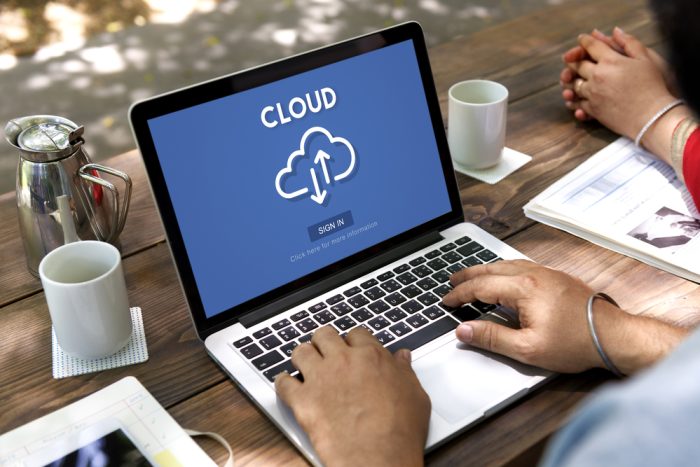When it comes to business, being on trend is good — but being ahead of the curve is better. At the dawn of the COVID-19 pandemic, when many companies were caught off guard by the looming calamity, Robert L. McKenna III, a California-based attorney who specializes in professional, general, and product liability defense cases, was already preparing a strategy for his firm that was both preemptive and proactive.
As early as February of 2020, McKenna knew his team needed to have a contingency plan in the event workers would be unable to come into the office. While others scrambled in a mad rush of catch-up as the crisis unfolded, McKenna already had a working prototype for a hybrid/distributed workforce in place.
A Prescient COVID-19 Contingency Plan
Robert McKenna says he spent several weeks analyzing Kjar, McKenna & Stockalper’s business model and determining which tasks actually needed to be done in person and which could be performed on a remote basis. After careful consideration, he came to the conclusion they could get by with one employee onsite per office.
“You needed one person to pick up the mail, scan it, and send it off to whoever needed it,” he explains. “Then, you either needed to have the same person or someone else come back in the afternoon to take care of whatever needed to be mailed out that day. Those working remotely could send things to the printer in the office, so all you’d need is to have somebody come in, fold up the correspondence, stick it in the envelope, put it through the Pitney Bowes, and dump it in the mail.”
Ides of March 2020
Whether ironic or not, around the Ides of March, 2020, McKenna’s firm was planning a dry run of the work-from-home scenario at the smaller of their offices. “I said, ‘Let’s just have everybody try it out and we’ll see how it goes.” With the national emergency declared not long after, that plan went from a rehearsal to a full performance. “It was a little bit faster than I expected,” McKenna admits, “but I was so glad to have had enough time to put together a sufficient planning process because it made the transition much, much smoother.”
McKenna says one of the main reasons his team was so easily able to pivot from working onsite to working on a hybrid or fully remote basis was that many of their processes were already established on the cloud.
Reaching the Limits of Server-Based Legal Practice
The legal world has come a long way since the days of Perry Mason. Paper is definitely last century. Monolithic onsite servers replaced miles and miles of filing cabinets long ago. But in many industries, and nowhere more so than the legal sector, the server technology ushered in to replace paperwork is also becoming obsolete.
“Traditionally, law firms relied on in-office software that is installed on a local computer or server within the office space. These servers are only accessible from computers in the same space but limit any remote access or capability. This setup quickly became an issue for law firms looking to sustain business continuity during the pandemic,” explains Nina Lee, a blogger for the cloud-based law office management software firm PracticePanther.
Financial Incentive
McKenna admits his first incentive for taking the firm to the cloud was a financial one, but he also saw the future potential of such a move. “The cost of buying those servers was so prohibitive five or six years ago, and they were kind of becoming outdated,” he recalls.
Recent Study
According to PracticePanther Marketing VP Mayowa Oyebadejo, a recent study conducted by the American Bar Association indicated that 76% of lawyers polled were in favor of remote or hybrid working models. Oyebadejo notes that’s more than a 30% increase from pre-pandemic responses.
Embracing the Cloud for Better Productivity and Work/Life Balance
“This signals that while lawyers were forced to adopt remote and hybrid work due to the pandemic, they realized substantial benefits and longevity in these types of working models,” he said in a webinar, as reported in The National Law Review. “The major benefits lawyers noted include increased productivity, work/life balance, workforce demand, and client satisfaction. However, it’s important to note that these benefits are not attainable without the use of technology, like legal practice management software (LPMs). Lawyers can freely work from anywhere, creating better work-life balance, which is often a concern in the fast-paced legal industry.”
Exception to the Rule
“During the pandemic, we found that in our industry, a 100% remote workforce was the exception to the rule. A lot of legal folks took the position that they were an essential service, and an essential service was always exempt from shutting down the business,” Robert McKenna explains. “But we decided not to go that route, and we were lucky because we’d actually started as a cloud-based business. As a cloud-based business, you don’t have any servers, so you don’t have to have people coming in to work on them.”

Hopping on the Cloud: Why Hybrid Is Here to Stay
For firms that have made the transition to a hybrid or fully distributed workforce without taking a hit to the bottom line, going back to a “body in the office” model is unlikely. Having a distributed workforce has yielded many upsides. “It reduced travel time and made scheduling much easier. I don’t think companies are going to have a choice in a lot of situations,” McKenna says. “It became clear for firms — especially the ones that did good jobs getting everybody remote early on — that most people get their jobs done remotely, and that there is no decline in productivity or work product.”
Work/Life Balance
The work/life balance many employees attained during the pandemic isn’t something they’re willing to give up. McKenna notes that for a lot of administrative staff personnel, the cost of buying a home in Orange County or Los Angeles was so prohibitive that the only opportunity for them to own one as middle-income earners was to find something with a hefty commute.
“But that was worth it because they could own homes to raise their kids in and have nice school districts… Then, that two-hour commute each way disappeared and they completed their work. If you get 20 hours back every week that you don’t spend in traffic, you’re a happy person.”
Cloud-Based Model vs. Server
While businesses that rely on servers are far from extinct, those that function in cloud-based experience a higher degree of flexibility for virtual workers. Per community association management software firm Vantaca: “If you’re a management company with a server, you must [go] through some type of [virtual private network] (VPN) client. This creates a new layer of complications, because now you’re limited to pre-configured and approved devices.”
Vantaca goes on to say that companies must configure individual devices to enable employees to access the server remotely, so while working offsite isn’t impossible, it means every personal device being used for work purposes requires a manual VPN set-up. “[It’s] time-consuming because now it’s a managed process to have to set up every device. When you’re in a COVID-like scenario, this isn’t ideal.”
“The cloud is more secure and cost-efficient than an on-premise solution,” says Lee. “Cloud-based legal software enables law firms to work securely within a centralized platform from anywhere.”
Being Anywhere, Anytime
“The beauty of being cloud-based,” McKenna reports, “is even when you’re at the office, you work remotely… Wherever you sign in is where you are. We don’t have big computer hard drives. There’s just a little box — like three decks of cards — that your monitor and Internet plug into. You can be anywhere and sign in anytime and do anything and it all works.”
It works so well in fact, the result of Kjar, McKenna & Stockalper’s use of an innovative hybrid cloud-based work model has been a sizable expansion for the firm.
Robert McKenna III’s Best Practices for a Cloud-Based Workforce
“Cloud technology has been around for a while but some law firms are hesitant to switch to the cloud due to security concerns, lack of control, or downtime,” notes Lee. “The cloud has numerous benefits for a law firm, however… Cloud-based legal practice management (LPM) software has slowly started to replace traditional servers and become the backbone for law firms to handle client management, calendaring, tasks, billing, and document storage.”
That said, Robert Mckenna believes learning to work efficiently in a cloud environment takes a specific mindset and the right equipment. Here are his tips to set yourself up for success:
When Working from Home, Create a Dedicated Workspace
Proper lighting, a comfortable chair, and a private noise- and interruption-free environment are optimum. (McKenna says when he gave the work-from-home order, he first made sure everyone had the equipment they’d need to succeed. “People needed a good chair, so we took their chair from work and took it to their home. We got laptops for people who needed laptops.”)
Prioritize Your Day
Figure out what to do before you go to lunch, and figure out what to do before you sign out.
Sign In and Sign Out for the Time You’re Actually Working
“One thing we’re really paying attention to is overtime,” McKenna says. “A lot of times working from home, people don’t necessarily sign out of their computers when they’re taking a break.”
He cautions that not signing in and out can wreak havoc with payroll. “The only way you can keep a record of when people are working when they’re off site is when they do something affirmatively on the software to let us know they’re there.”
Make Healthy Adjustments to Offset Increased Screen Time
One of the trade-offs of working from home is the amount of time you spend in front of a computer. When virtual meetings take the place of in-person meetings, it can take a toll on your eyes.
“I could do a meeting in person for four hours, no problem,” says McKenna. “You do an online meeting in a Zoom format for four hours? Your head’s achy, and your eyes hurt. I wondered why that was the case. Well, it turns out, the amount of strain you put on your eyes when you’re focusing on something that’s often the size of a dime is a problem, because having that small a field of focus for extended periods of time isn’t normal. When you’re looking at a monitor, you also tend to blink a lot less, which isn’t good either.”
Remedy
McKenna’s solution is to set his laptop at an angle. “I usually explain to people, ‘Hey, I’m not trying to be rude… I’m not working on other stuff. This just makes it a lot easier on my eyes.’”
Other Issues
Parked in front of a computer for long stretches of time can also lead to fatigue, muscle aches, and even digestive issues. If it’s an option that works for you, consider a standing desk. Stand up, stretch, and take regular breaks… However, if you’re going to be away for more than a minute or two, just make sure to sign out.
Find a Home-Based Business to Start-Up >>> Hundreds of Business Listings.

















































